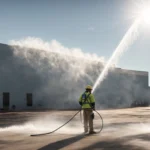For many businesses, the struggle isn’t in getting people to visit their website, it’s converting those visits into measurable revenue. A well-structured marketing funnel isn’t just a diagram or a theory; it’s a dynamic system that aligns content, channels, and conversion tactics to drive sustainable growth.
But the reality? Most funnels leak. Traffic gets in, but too few leads emerge. And even fewer convert to paying customers.
In this article, we’ll break down what separates an underperforming funnel from one that actually works—and what steps you can take to optimize yours for revenue.
Start with Strategy, Not Tactics
It’s tempting to jump straight into ads, SEO, or email marketing without stepping back to ask: What does our buyer actually need at each stage of their journey?
A revenue-generating funnel starts with clear answers to questions like:
- Who is our ideal buyer?
- What pain points do they experience before engaging with us?
- What information builds trust and drives action?
With those insights, you can architect a funnel that delivers the right content, at the right time, through the right channels.
Top-of-Funnel: Capture the Right Kind of Attention
Not all traffic is created equal. Instead of chasing vanity metrics, focus on attracting qualified visitors. That means using:
- High-quality content designed to rank for relevant search terms
- Paid campaigns targeting precise demographics or intent-based keywords
- Strategic partnerships or co-marketing efforts that build trust from the start
This is where growth-focused digital marketing services shine by aligning outreach with your business goals rather than just pumping up visitor counts.
Middle-of-Funnel: Nurture and Educate
Once someone knows who you are, your job is to build trust and guide them toward a solution. Use this phase to:
- Offer downloadable guides, tools, or webinars
- Deliver segmented email sequences based on behavior or interest
- Position your product or service as a tailored solution to a specific problem
The middle of the funnel is where most brands underdeliver. Don’t just send more content—send the right content that bridges the gap between interest and intent.
Bottom-of-Funnel: Convert with Confidence
At this point, the buyer is evaluating their options. Make their decision easier by offering:
- Clear comparisons, testimonials, and case studies
- Live demos or sales consultations
- Strong CTAs with a frictionless conversion path
Your website and sales team should work hand-in-hand here. Every touchpoint should reinforce trust and reduce hesitancy.
Measurement & Optimization: Funnels Aren’t Static
Even a beautifully built funnel won’t perform forever. Markets shift. Buyer expectations evolve. That’s why continual measurement is key.
Track:
- Where traffic is coming from
- Where leads drop off
- What content or actions correlate most with revenue
Then iterate. Test. Improve.
Partnering with a team that offers a proven track record of effective growth marketing services, like Telescope Mapping, ensures you’re constantly refining your funnel to reflect real-world results.
Final Thoughts
The gap between traffic and revenue isn’t bridged by luck—it’s built through a thoughtful funnel strategy that aligns with the customer journey. By focusing on qualified traffic, nurturing relationships, and making conversions easy, your funnel becomes a true revenue engine.
If you’re looking to upgrade from disconnected tactics to a cohesive strategy that actually moves the needle, it’s time to take a closer look at how your funnel is performing—and where it’s leaking.












